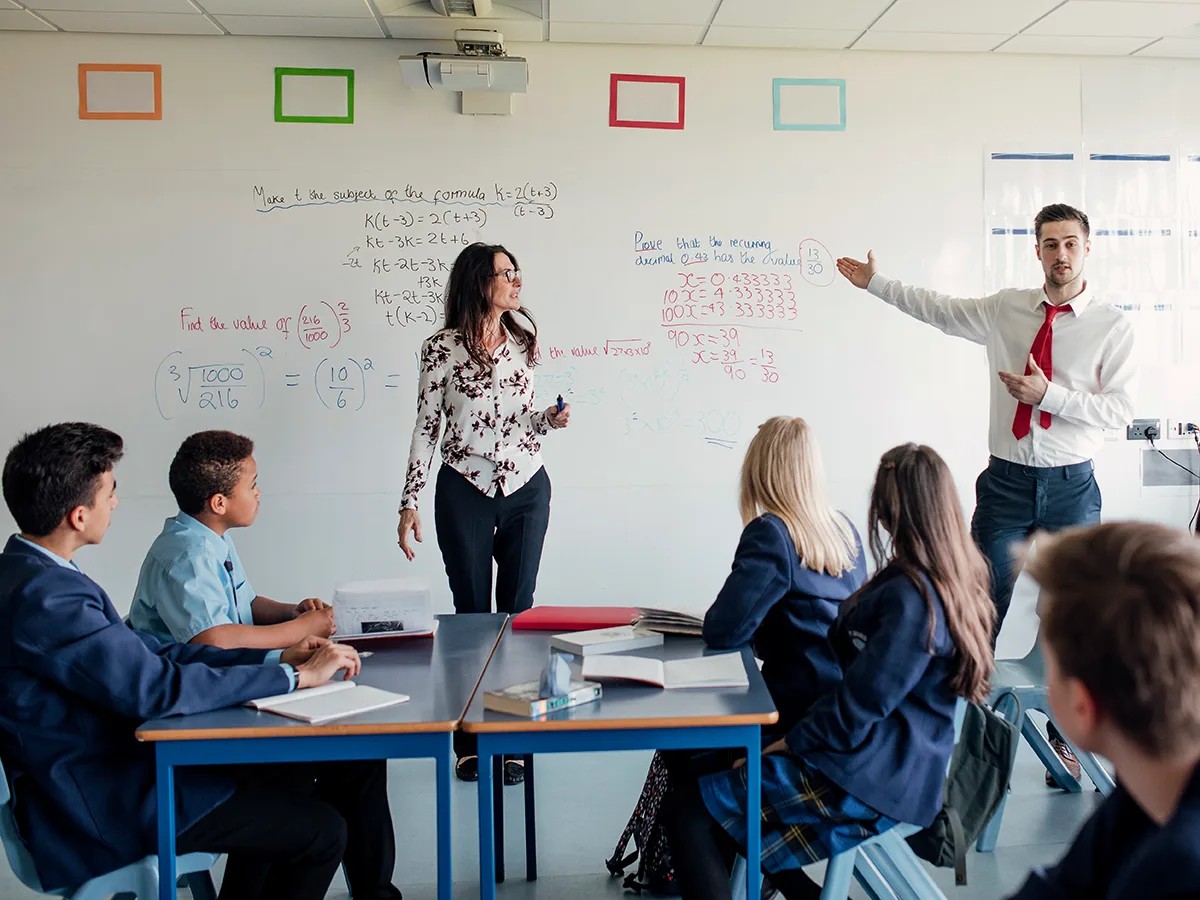Special education teachers: A guide for families

At a glance
The role of special education teachers varies from school to school and from student to student.
Special education teachers and general education teachers work together in lots of ways.
They may run special education classrooms or co-teach in the general classroom.
If your child has an IEP, you may wonder what the special education teacher does that the general education teacher doesn’t do. Will the teacher work with your child one-on-one? Is this the person you can call when you have questions about your child’s IEP?
A special education teacher can fill many different roles. That role varies from school to school and from student to student. Here’s what you need to know about special education teachers.
Special education training
The training a special education teacher gets differs from state to state. It can even vary among school districts in the same state.
Most special education teachers have the same training that general education teachers have. But they also complete added coursework. These extra courses vary, based on the specialty a teacher pursues.
For example, some teachers want to teach kids with more than one disability. Their coursework will be different than that of teachers who want to teach kids with .
For more information about the different special education certification requirements in your state, check your state’s Department of Education website.
How special education teachers work with general education teachers
Special education teachers often work with general education teachers. General education teachers turn to special education teachers when they want to learn more about how learning and thinking differences impact students.
Special education teachers might also observe students in the classroom and do informal assessments of kids. That lets them see how things are going and think about what might help.
They also help figure out how to implement those accommodations. They help to create and track the data for behavior intervention and classroom management plans. And they might help general education teachers adapt lesson plans.
How special education teachers work with students
How a teacher works with students depends on the students’ needs and the way a school is set up.
In some districts, for example, teachers run special education classrooms. Two common examples of these are:
Resource rooms. Students come for instruction in certain subjects, like math or reading.
Self-contained classrooms. Students with similar learning needs spend the majority of their day in this type of room. Most kids who learn and think differently aren’t in self-contained classrooms, though. They spend most of their day in the general education classroom.
Special education teachers may also co-teach in the general education classroom. They help all students, but especially kids who need extra support. That goes for kids who are and aren’t identified with learning and thinking differences.
Here are some other ways a special education teacher might work with students:
Giving support in the general education setting.
Providing “pull-out” services in small groups or one-on-one.
Keeping track of progress toward IEP goals.
In some rural school districts, there may not be a special education teacher in the building full-time. Sometimes teachers work in more than one school.
In that case, there are often paraprofessionals who support kids’ learning. (They’re sometimes known as aides.) They follow a special education teacher’s lesson plan and work under the teacher’s supervision.
Partnering with special education teachers
Most special education teachers have training in how to teach specific subjects to different kinds of learners. That includes everything from reading to science to math. They may also learn how to plan lessons using Universal Design for Learning (UDL) and assistive technology.
But teacher-preparation programs don’t all include training in things like reading programs for struggling readers. That may be something a teacher has to learn at professional development training. If you’re not sure about the training your child’s teacher has, it’s OK to ask. Having an open dialogue can help build a strong partnership.
As you learn more about the teacher, share information about your child. Talk about strengths and challenges, as well as strategies that work at home. You can even share a 3×3 card to help teachers get to know your child. Find out how well your child’s supports and services are working. And ask what you can do at home to support your child.
Key takeaways
The training a special education teacher gets varies from state to state, and even district by district.
Special education teachers often work with general education teachers.
Partnering with the special education teacher can help you both make sure your child is getting the right support.




